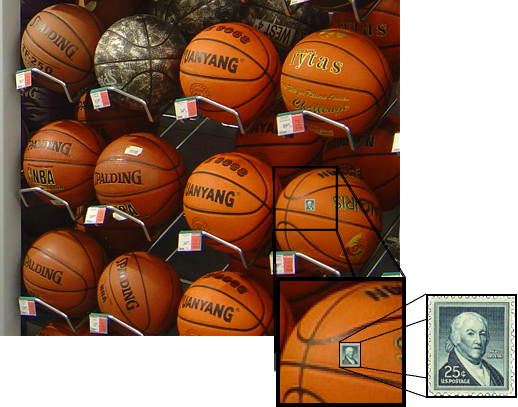 In the past, I've discussed standard ways of visualizing mathematical concepts, including ways to grasp pi and get a sense of scale. What if you need to create your own visualizations, however?
In the past, I've discussed standard ways of visualizing mathematical concepts, including ways to grasp pi and get a sense of scale. What if you need to create your own visualizations, however?
It turns out our old friend Wolfram|Alpha is not only good at working out the math, but making it easier to grasp, as well.
Let's say you work for a company that's giving a holiday dinner for all 3,000 of its employees. As part of this dinner, there will be a drawing in which one of the employees will win a new car.
Your probability of winning the car, of course, is 1 in 3,000, and you really want to understand what this probability means. So, you might try working out 1/3,000 on Wolfram|Alpha, and seeing that this is equivalent to 0.03333%. All that really happened here is that you now have a different number to ponder. We know that a probability of 1 in 3,000 and 0.03333% is a slim chance, but it's all still too abstract.
As explained in the book Made To Stick, the trick to taking something abstract and making it concrete is to describe it in a way that can be experienced through the senses. My blog post on concreteness as it applies to magic performances goes into more detail, as well.
Instead of simply seeing the numbers as chances, then, what if we imagined the 3,000 represented some kind of physical space? For example, 3,000 might be pictured as 3,000 miles. What does 3,000 miles look like? Entering 3,000 miles in Wolfram|Alpha, we find out that this distance is about ¾ the length of the Amazon river, 20% longer than the distance from New York to Los Angeles, or about ⅛ the circumference of the earth at the equator.
It's getting easier to picture, but still a little hard to grasp. Let's try scaling things down to inches and see what happens. 3,000 inches is 10% longer than a Boeing 747, or the height of a 28-story building. That's good, but perhaps picturing it as an area, in square inches would be better.
Trying out 3,000 square inches, we see that this is roughly the size of the surface area of 11 NBA basketballs! This is a great image, as it's well within the realm of the average person's experience.
Remember, though, that we're trying to picture what 1 in 3,000 looks like, so we need to picture 1 square inch, as well. Wolfram|Alpha says that 1 square inch is about the size of a postage stamp, which is another great image.
Putting this together, we see that 1 in 3,000 can be pictured as the area of a postage stamp as compared to the surface area of 11 NBA basketballs! The image below gets the concept across quickly and directly.

Now that you can see the drawing as 11 basketballs covered in stamps, with a hope of the company picking your single stamp out of those, it's more easily understood.
It's best to play around with different ways of seeing the numbers involved to find the best image. Switching to metric, we see that 1 cm and 3,000 cm gives the image of the width of a CD case as compared to the length of the average blue whale. There's also the volume of volume of 26 M&MS as compared to 950 large eggs.
There's nothing that says you have to use physical space, either. 1 in 3,000 could just as easily be thought of as a single second out of an average college lecture, the mass of a ¾-full can of soda as compared to the that of 2 dairy cows, and more!
Note that, while discovering the images requires particular units of measurement, presenting the images doesn't require disclosing units at all. Stamps, basketballs, CD cases and blue whales become the units themselves. When exploring various images, you'll find that larger numbers generally require smaller units.
Play around with numbers you use, and see what you discover. If you find any numbers you've been able to make visual with amazing or amusing images, I'd love to hear about them in the comments!
0
Understanding Math with Wolfram|Alpha
Published on Thursday, November 01, 2012 in fun, innumeracy, math, psychology, software
Related Posts
Post Details
Subscribe to:
Post Comments (Atom)




No Response to "Understanding Math with Wolfram|Alpha"
Post a Comment